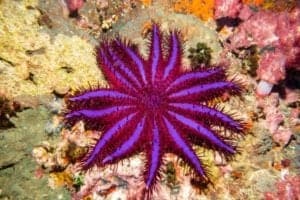Among marine life, the starfish stands out as one of the most interesting and beautiful. There are several reasons why they are called “Sea Stars.” On average, the lifespan of a starfish or sea star is 35 years. Regardless, larger starfish species tend to live longer than their smaller ones. Let’s dive into the strange and interesting history of these celestial-looking creatures. Continue reading to learn 10 incredible starfish facts!

1. Starfish are NOT Fish
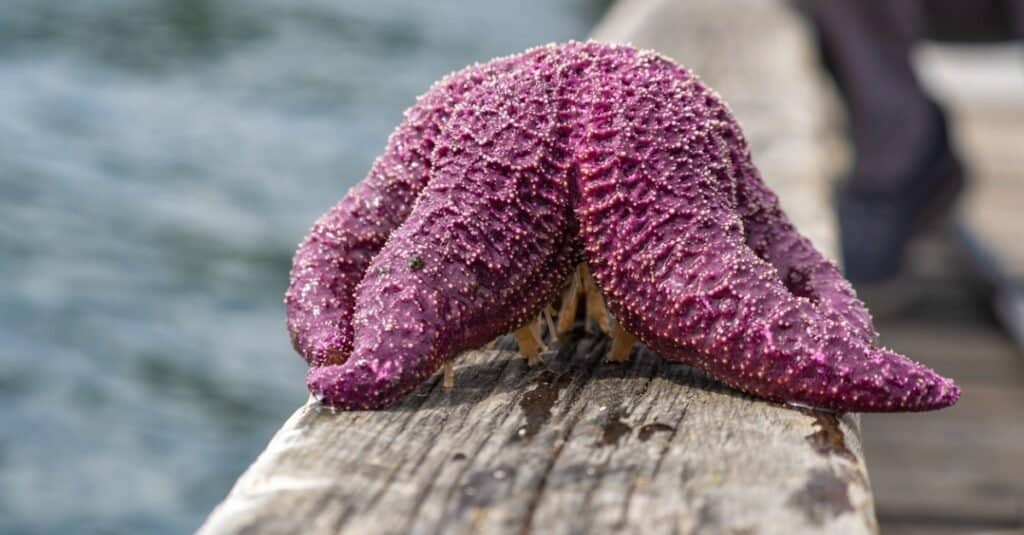
Starfish are marine invertebrates.
©iStock.com/Dale Gu
Because they are not strictly fish, experts prefer to call them “sea stars” instead. Though they dwell in water, they lack the fish-like characteristics of fins, gills, and scales. Starfish also have a particular mode of movement, distinct from that of fish, thanks to the little stems they possess.
Echinoderms, of which starfish are a kind, are unique to the ocean. Echinoderms are a type of marine invertebrate characterized by their lack of a backbone and their prickly skin.
2. They Have a Unique Way of Eating
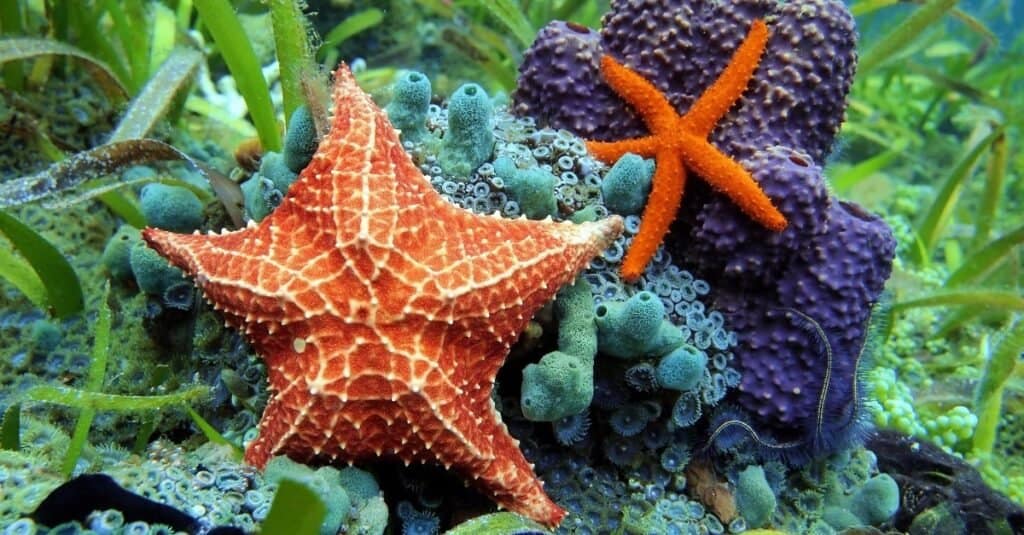
Starfish secure food with their foot.
©iStock.com/Damocean
In the middle of the starfish’s underside is where you’ll find its mouth. It uses the bumpers on the bottoms of its foot to secure its food. Common foods for starfish include seaweed, sponge, oysters, reefs, sand dollars, clams, and mussels. Furthermore, other types of starfish will eat injured or sick fish if given a chance.
So, yes, they also partake of the meaty delights of the world. When eating oysters or clams, for instance, it uses its feet to crack open the shell. After the starfish’s mouth is opened, its stomach protrudes and is pushed into the prey’s shell.
3. Starfish Have a Protective Shield

Sea stars have a calcium carbonate layer with small spikes for the skin.
©Photoestetica/Shutterstock.com
The rigid shell of a starfish can have a leathery or even prickly texture, depending on the species. Sea stars have a calcium carbonate layer with small spikes for the skin. Fishes, birds, and even sea otters are deterred from attacking them in this way.
4. They Can Feel Pain

Starfish can feel pain, despite lacking a heart or brain.
©iStock.com/bksrus
Despite lacking a brain, heart, or blood vessels, starfish are still able to feel pain thanks to their highly developed nervous system. Starfish have gills on their external bodies that allow them to breathe oxygen from the water. Never pick up a starfish or take it out of the water; doing so could lead to its death.
5. Starfish Can Regenerate Damaged Parts

Sunflower sea stars are the only species of its genus and are among the largest sea stars in the world.
©NatureDiver/Shutterstock.com
Starfish can regrow missing limbs and other body parts. As a result, they can “sacrifice” their arms in an offensive strategy. Sea stars are well-known not only for their unusual form but also for their remarkable capacity for regenerative growth. Fascinatingly, each segment of a starfish will regenerate into a new adult starfish if the animal is radially severed down the middle!
6. They Can Reproduce Both Sexually and Asexually
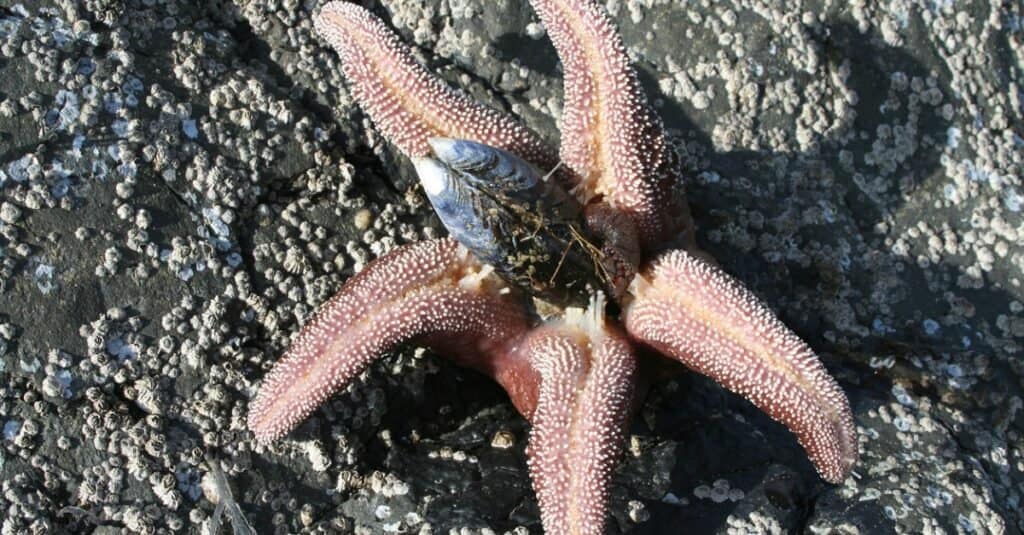
Starfish can reproduce sexually and asexually.
©iStock.com/towlake
Starfish have unique life cycles and can reproduce both sexually and asexually, the latter of which does not necessitate the fusing of sperm and eggs. Fertilization in sexually reproducing starfish occurs in the sea, and the sperm and eggs are released into the environment, a process known as “free spawning.” Fertilization begins when the sperm and egg float toward each other and then crash. Furthermore, starfish can reproduce asexually through either fission or arm autotomy.
7. Sea Stars aka Starfish Have Eyes
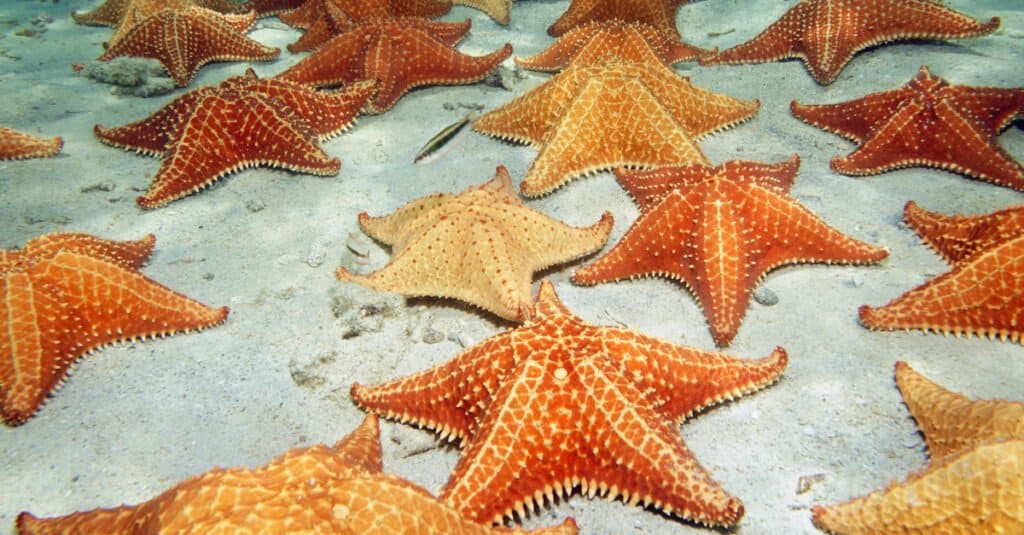
Starfish use tiny eyes at the end of their arms to distinguish between light and dark.
©Damsea/Shutterstock.com
Although their eyes are out of sight, starfish do have them. Starfish have eyes at the ends of their arms. Without the ability to see fine details, these eyes are limited to sensing light and dark. Despite not having eyesight on par with humans, these creatures can get around by distinguishing between different light tones.
8. They are Generally Edible

Some people like the flavor of starfish and think it tastes like river crabs or sea urchins, although others claim it tastes like nothing at all.
©iStock.com/Eduardo Baena
In some cities, including Beijing, China, street vendors sell sushi made with starfish. Some people like the flavor of starfish, while others don’t. While some think it tastes like river crabs or sea urchins, some claim it tastes like nothing at all. The odd brown fish stuff inside is edible, if not particularly pleasant, once you break through the stiff skin. It has the texture of toothpaste or ground beef and smells like rotting fish.
9. There Are Such Things As Square Sea Stars

Square starfish are due to a genetic abnormality and have been seen in the biscuit sea star species.
©vojce/ via Getty Images
Due to a genetic abnormality, even 5-pointed starfish can have a more square shape after birth. In fact, one of the rarer species of starfish, the square starfish, was discovered in Matheson’s Bay in New Zealand, fascinating to both tourists and marine biologists.
10. Some Species Can Survive Up To 28 Hours Outside Of Water
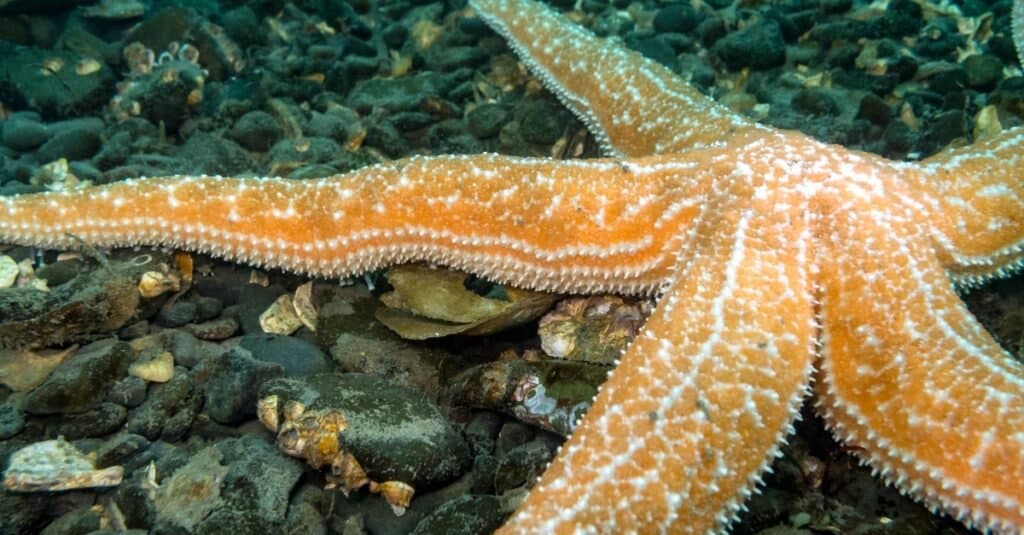
Starfish stay out of water for short periods.
©iStock.com/naturediver
Starfish are only able to spend brief periods out of the water. Therefore, any sightings of them on the shore or boulders and marine structures during low tide are likely to be temporary. Larger kinds of starfish can remain healthy and alive for up to 28 hours when separated from their usual water source.
The photo featured at the top of this post is © Vojce/Shutterstock.com
Thank you for reading! Have some feedback for us? Contact the AZ Animals editorial team.




